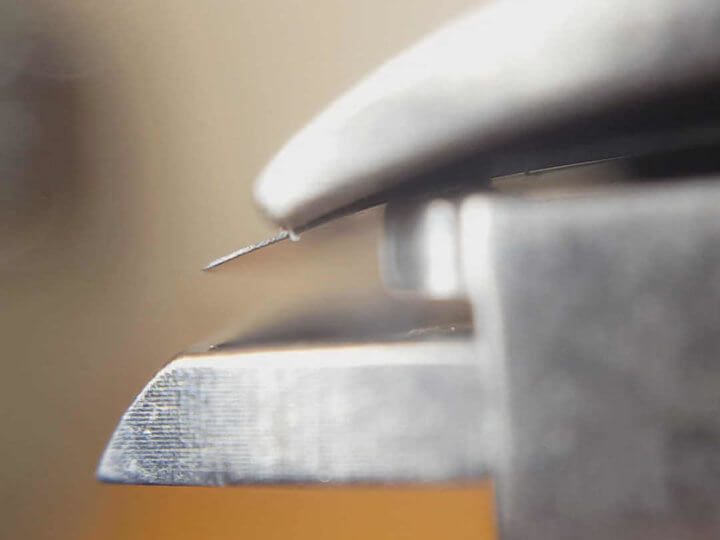
Over the past couple of months I have written about the new crop of adjustable razors and how to use an adjustable razor most effectively. I combined the two posts into a Youtube video:
Transcription:
It’s no secret that I like adjustable double edge razors. I used to say that you could pry my Merkur Progress out of my cold, dead fingers. I’ve moved on from the Progress but when it comes to double edge razors I still prefer adjustables. What is the most effective way to use an adjustable razor? Here’s my take.
First, What Is An Adjustable Razor? An adjustable safety razor can change the blade gap between the razor blade’s edge and the razor head’s base plate. The blade gap changes the amount of exposure of the razor blade’s edge to the skin to create a milder or a more aggressive shave.
Adjustable razors can do this continuously within a range,
There are other razors that I call semi-adjustables that have a set of gap points determined by different base plates.
Since you can “adjust” your shave, what is the best way to use this kind of razor? I think there are three general routines you can go through. You may have to try each method to find the one that right for you.
The Set-It-And-Forget-it Method
I think the most straightforward way of using an adjustable razor is to simply find the one setting that works best for you and stick to it. This method does not use the razor to its fullest capability but it is easy and avoids fussiness in your shave. This is also the best way to use “semi-adjustable” razors that come with different base plates since it might be difficult to swap base plates mid-shave.
The Dial Down Method
I bet most people use the “dial down” method when they first try an adjustable safety razor. This is where a shaver will shave their first pass at a relatively high setting (lots of blade gap) then dial down for successive passes. The thought process here is that this method will remove as much stubble as possible on the first pass then dial down to avoid nicks and cuts for the balance of the shave.
This method may be good for those who want a shorter, great-but-maybe-not-best shave experience. Because the blade gap is smaller later in the shave the blade edge does not as efficiently cut the remaining stubble. And for me this method actually increases the chance for nicks and cuts by trying to take off too much stubble at once early in the shave.
The Dial Up Method
The other side of the coin is starting at a relatively low setting for the first pass and dialing up for successive passes. Advocates of this method say it not only reduces the stubble most comfortably but also does not take off too much stubble at once, decreasing the chance of nicks and cuts. Later passes at a higher setting (more blade gap) removes more stubble closer to the skin line. Because the amount of stubble is shorter later in the shave there isn’t as much chance to the blade edge to “catch” and cause a nick. The thing to watch out for is a higher possibility of razor burn. However if the shave is done efficiently, without repeating strokes during the pass, this concern can be reduced. Think of the recent trend of “dermaplaning” for women.
This method may seem counterintuitive but works best for me when I do my typical three pass shave! I can consistently get a “baby’s butt smooth” this way (though I will dial back down if I do a touch-up after my third pass).
A note about adjusting–up or down. You should start out with relatively small adjustments: perhaps dialing up or down by a half-step. For example, if you are trying the “dial down” method and your regular razor razor corresponds to a “3” on a particular adjustable, try the first pass at “3.5,” the second pass at “3,” and the third pass at “2.5.”
A note about twist-to-open adjustable razors. To adjust a this kind of razor its best to first loosen the opening mechanism slightly, make the adjustment, then re-tighten the mechanism. Failure to do so may torque the razor head, resulting in an uneven shave, or even damage to the head mechanism.
An adjustable safety razor can offer unparalleled versatility in shaving when used effectively. They can be used to not only tailor a shave to your specific circumstances, they can more easily mitigate other variables in the shave that might otherwise cause problems. Transitioning to an adjustable razor may take a little time to fully appreciate its capabilities, but I think it’s worth the effort.


Mark,
Great tip when using a twist-to-open razor and loosening the doors before making the adjustment. I was unaware of this and will make it part of my routine.
I use the dial up method and have since I first started using a Gillette Super in the 1970’s. I always chalked it up to my inability to leave buttons, dials and levers alone. Great post as always!
I recently bought the Variant, partly based on some things I read about it here. I absolutely love it, and I am getting the best nick-free shave I have ever been able to obtain (so thank you folks at Sharpologist for that). Have nothing but nice things to say about the Variant. Love the feel, love the weight. For daily use I utilize the “set and forget” method, since I am lazy and a CCS is AOK most of the time. 🙂 I do utilize the “dial up method” when I want it BBS. Not sure I could go back to a non adjustable.
Keep my Fatboy on 3 and I won’t get another adjustable. Not my cuppa tea.
Comments are closed.